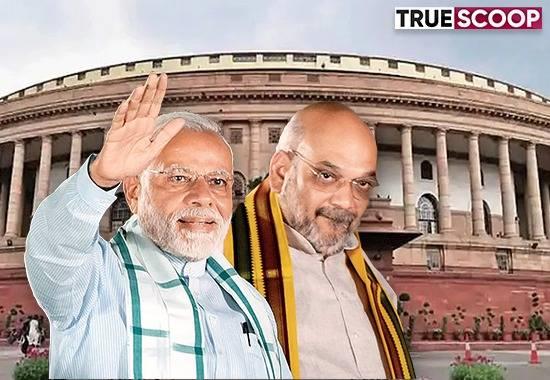The Bharatiya Janata Party (BJP) has bolstered its stronghold and won four out of five states in the recently concluded elections. On March 10, 2022 election results of five states i.e. Uttar Pradesh, Manipur, Goa, Uttarakhand, and Punjab were declared. The BJP retained all four states it ruled, with a sparkling victory in the politically crucial Uttar Pradesh, ensuring a boost in the upcoming Rajya Sabha polls and the 2024 Lok Sabha elections. The victory of the BJP in multiple states gave a major boost to its agenda 'double engine' governance. However, this 'double engine' governance might hamper the face of Indian federalism i.e. the Rajya Sabha. Those who are wondering how development-driven 'double engine' governance can hamper the proceedings of the Rajya can read further:
To understand how the double engine governance can hamper the proceedings of the Rajya Sabha, readers first have to take a dip into the structure of Parliament.
What is Rajya Sabha and how members are elected?
Indian Parliament consists of Lok Sabha (Lower House), Rajya Sabha (Upper House), and the President. Rajya Sabha is the upper house of the parliament and is also called as House of Elders in the Indian Parliament. Rajya Sabha is empowered to protect the interests of the states and union territories if there is interference by the centre in their work. The maximum strength (most number of members) of Rajya Sabha is 250, out of which 12 are nominated by the President of India and 238 are representatives of the states and Union Territories. Currently, there are 245 members, out of which 233 are representatives of states and UTs, and 12 are nominated by the President of India.
A Rajya Sabha member is elected by an indirect election. As per the fourth schedule of the Constitution of India each States and Union Territories have been allocated a particular number of seats based on the population. Elected members of the Legislative Assembly of the state and Union Territory nominates their candidates' name as the nominee for the Rajya Sabha member seat.
How development-driven 'Double Engine' governance can hamper the face of federalism?
Rajya Sabha is known as the face of federalism as the Upper House is empowered to keep the Central Government in check that they do not interfere in the state government matters. The concept of 'Double Engine' is coined by the ruling BJP i.e. it states that if there will be the same political party ruling both in Centre and the State then development can be done effortlessly & rapidly. On the other hand, federalism is the relationship between the federal (Centre) and state governments in which both work together on a variety of issues and programs.
BJP's victory in 4 out of 5 states especially in UP has been a major push keeping the structure of Rajya Sabha in mind. Parliament, in general, is expected to be a house of debates and discussions, however, with the shrinking of opposition parties, Rajya Sabha's significance is getting diminished and therefore it can affect the federal nature of between centre and state.
Currently, BJP and its allies are ruling over the majority of the states. On the other hand, Congress and its allies have been diminished to four states i.e. Rajasthan, Chhattisgarh, Jharkhand, and Maharashtra. Arvind Kejriwal's AAP and Mamata Banerjee's Trinamool Congress (TMC) are slowly becoming the face of the opposition parties who could actually challenge PM Modi and the BJP.
To know the number of Rajya Sabha members state-wise click here
As per Rajya Sabha's official website, BJP has 97 members in the Upper House. On the second number, there is Congress which has 33 members while All India Trinamool Congress (AITC ) has 13 members. It is pertinent to mention here that the dynamics of Rajya Sabha are soon likely to be changed elections 2022 results have been declared and CM's of respective states will be taking their oath soon.
